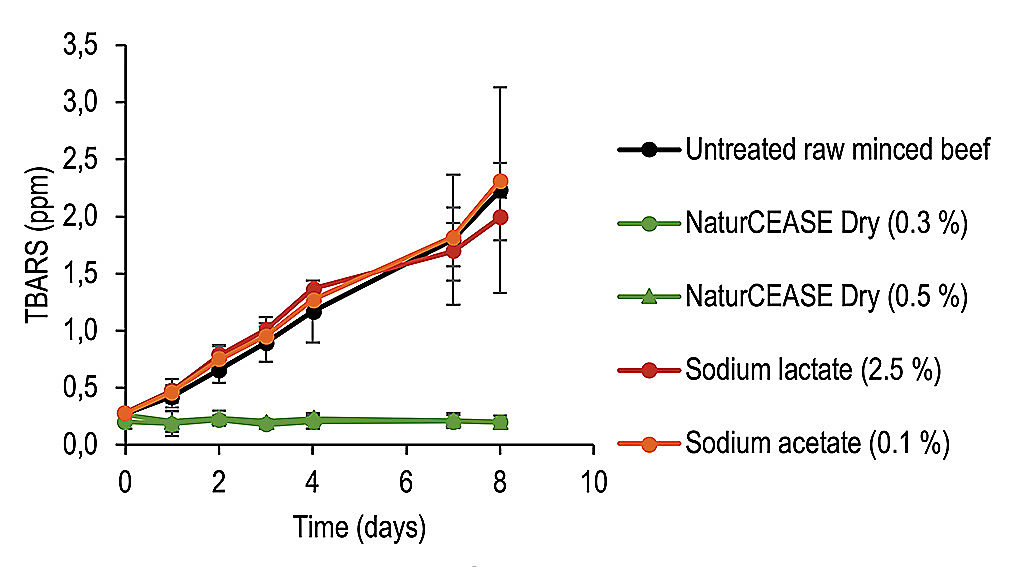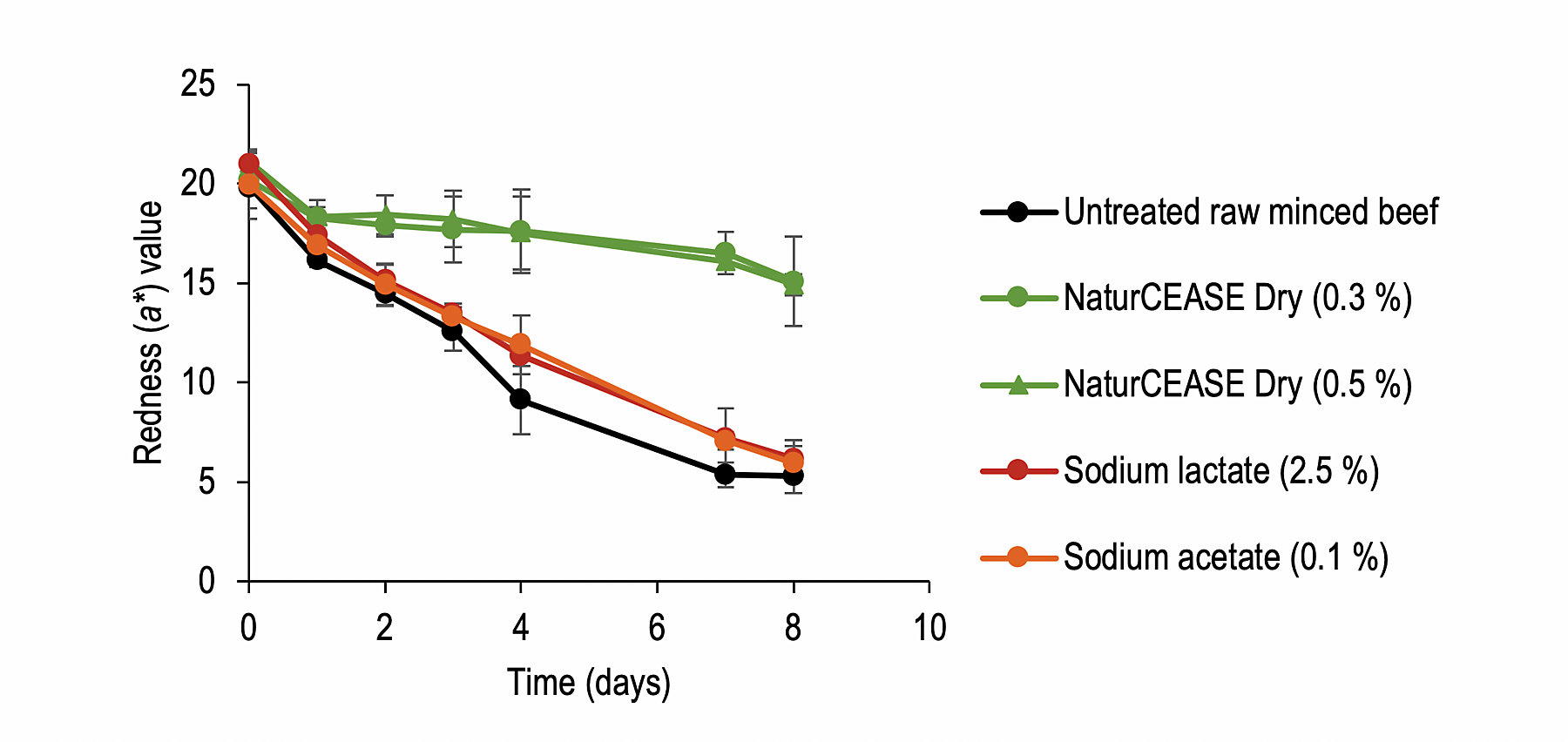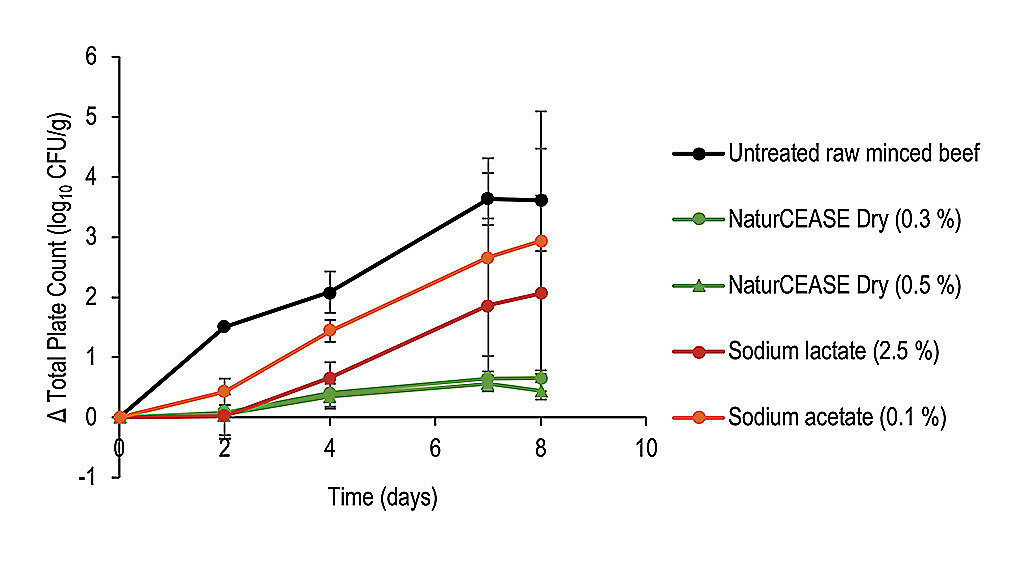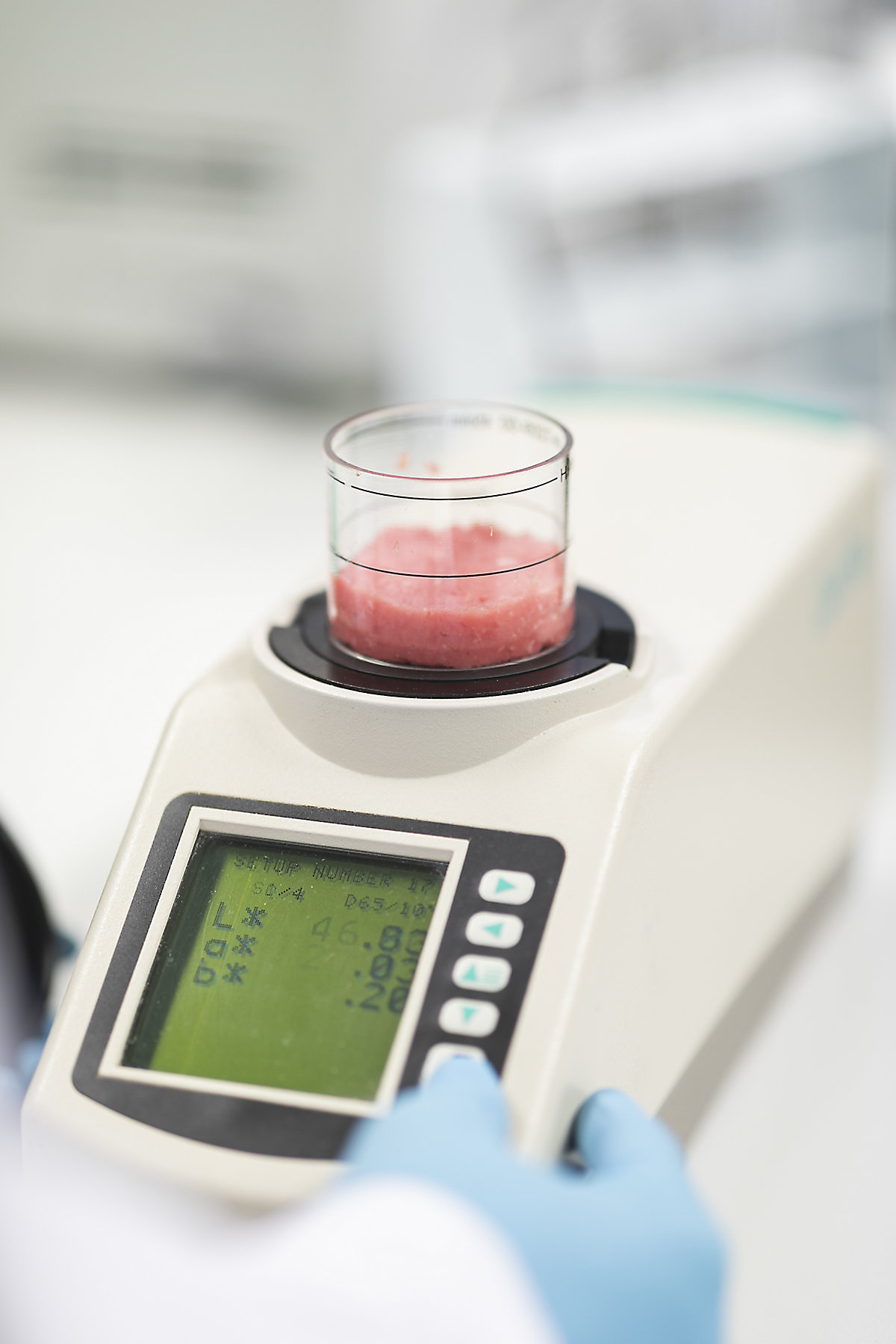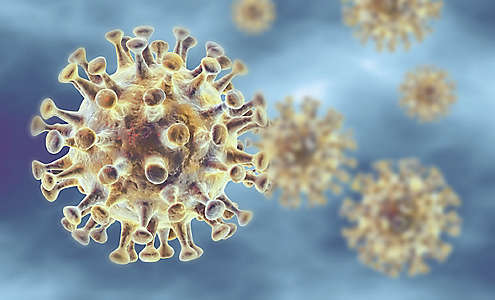Average (n=3) redness values of raw minced beef treatments, stored at 4°C in the dark. Error bars represent the standard deviation of the samples.
3. Sensory
Sensory needs to be evaluated over time in order to determine if the sensory panel can identify rancid untreated meat products with off-flavours versus treated meat products with a specific ingredient combination that keeps the product fresh. Meat samples will be ranked according to preference in taste (rank preference test).
Glenn De Ceulaer: “In our NaturCEASE Dry study, we conducted a rank preference test. A score from 1 to 5 was given, in which 1 was the most preferred, and 5 was the least preferred. Additionally, we performed an acceptance test so panellists could rate the meat on a hedonic rating scale ranging from 1 (dislike extremely) to 9 (like extremely).”
4. Microbial Spoilage
Microbial spoilage is important to control in order to guarantee meat safety.
Glenn De Ceulaer: “In our NaturCEASE Dry study, we measured Total Plate Counts (TPC). TPC can be measured to identify if microbial growth is inhibited. This value gives a quantitative estimate of the concentration of microorganisms such as bacteria, yeast and mould in a sample. The count represents the number of colony-forming units (CFU) per g of the sample.”

